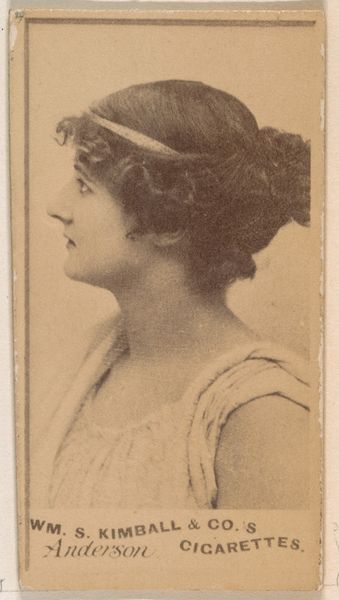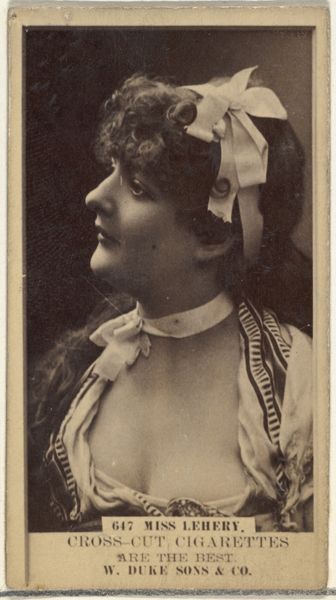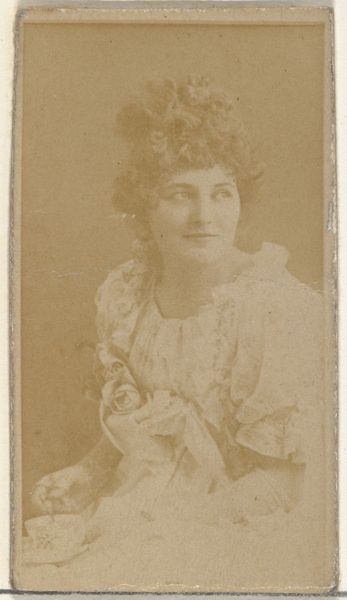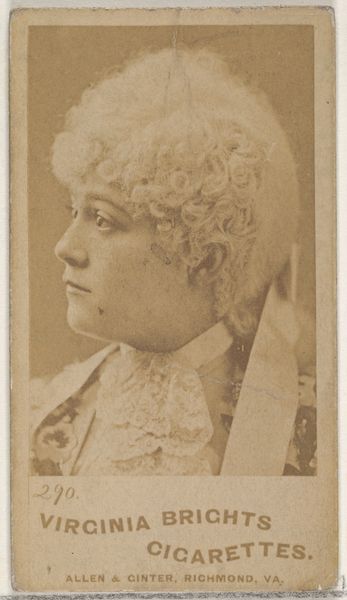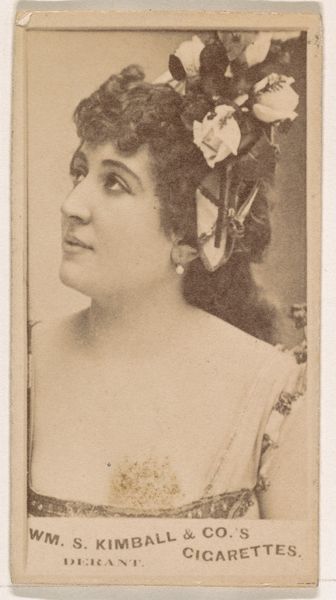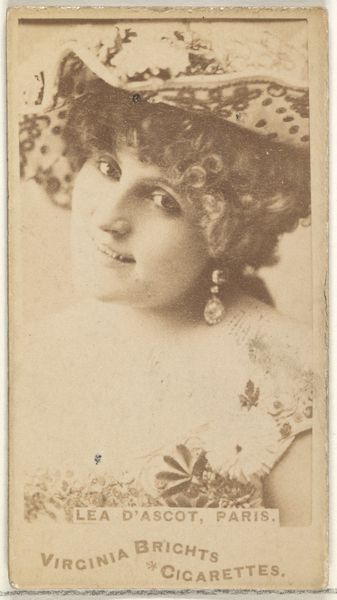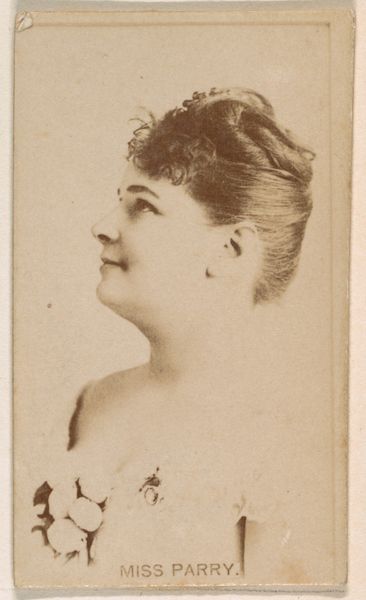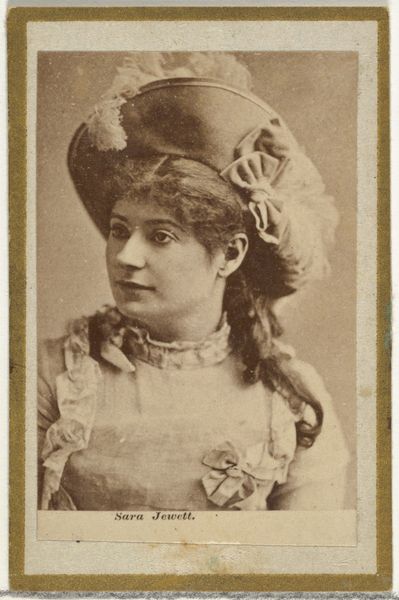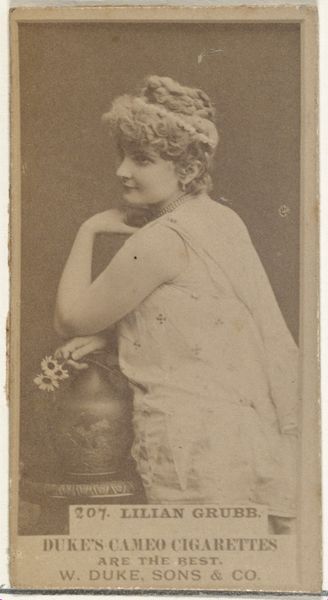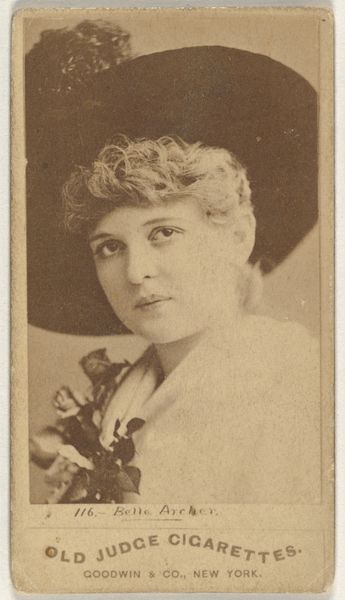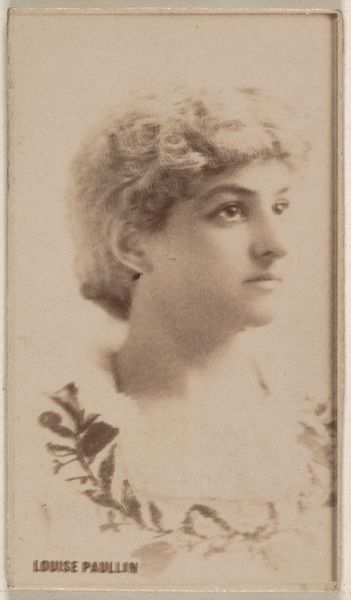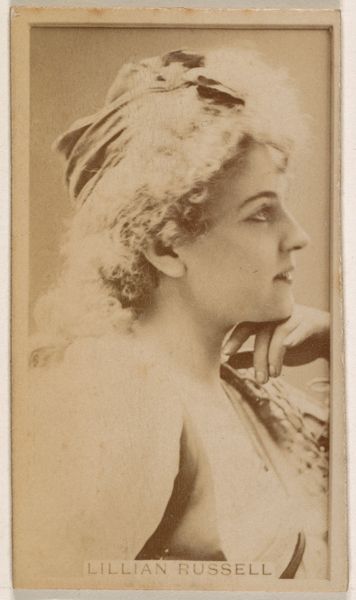
Card Number 509, Miss Lehery, from the Actors and Actresses series (N145-7) issued by Duke Sons & Co. to promote Duke Cigarettes 1880s
0:00
0:00
drawing, print, photography
#
portrait
#
drawing
# print
#
photography
#
history-painting
Dimensions: Sheet: 2 11/16 × 1 3/8 in. (6.8 × 3.5 cm)
Copyright: Public Domain
Editor: This is "Card Number 509, Miss Lehery," one of the Actors and Actresses series, created by W. Duke, Sons & Co. in the 1880s as a promotional item for Duke Cigarettes. It's currently housed at the Metropolitan Museum of Art. I'm struck by the almost old-fashioned glamour of it all; a profile portrait on something meant to be collected like…trading cards? How should we interpret something like this? Curator: Well, consider the late 19th century. Tobacco companies were essentially shaping the visual culture. They realized images, particularly of actresses and notable figures, could boost sales. This card is less about "art" in the traditional sense, and more about popular culture, consumerism, and the growing cult of celebrity. What kind of image of womanhood do you think Duke Cigarettes were hoping to sell here? Editor: I guess...an image of sophistication and aspiration. Someone beautiful and maybe a little rebellious if they were to challenge the status quo. This card might suggest that their product enables access to this world? Curator: Precisely. Notice the careful detail in the print – the lighting on her face, the elaborate ribbons. These were mass-produced images but are referencing higher class society that were made widely accessible for the average person. Cigarette cards democratized access to imagery of the wealthy for consumers to collect. Editor: So, it’s interesting to consider this as an early form of advertising leveraging what might have been perceived as history and power through celebrity, now presented for general public consumption. Curator: Absolutely. It showcases how industry intersected with the art world, using celebrity imagery to sell a product while subtly shaping public perceptions of class and ambition. Consider how this politicized visual space influenced later generations. Editor: That’s a perspective I hadn't considered, thinking of it in terms of commercial and social impact, rather than artistic intent. It certainly recontextualizes what I thought I knew! Curator: Indeed. It reminds us that even seemingly simple images have complex social histories embedded within them.
Comments
No comments
Be the first to comment and join the conversation on the ultimate creative platform.

